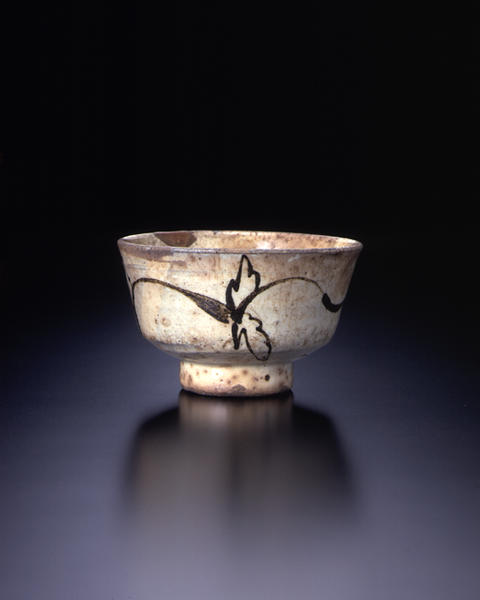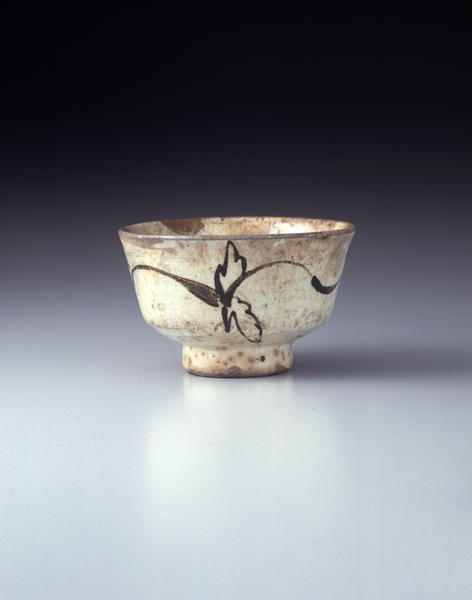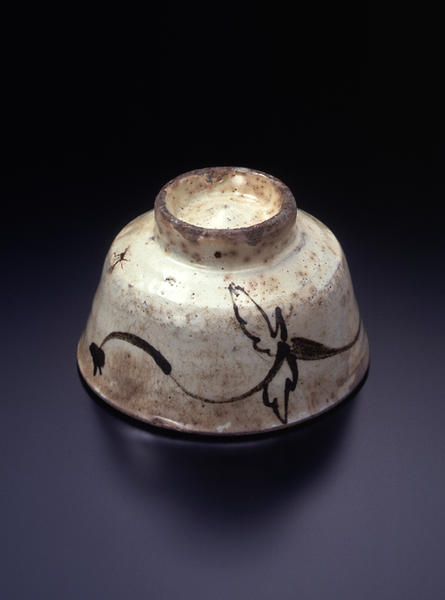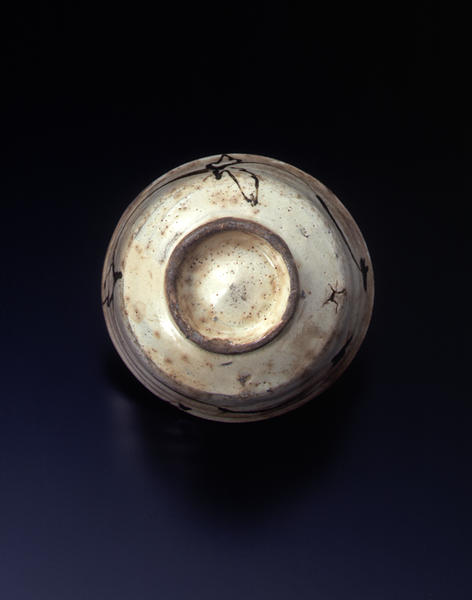Sake Cup with Plants and Flowers Design
- Korea
- Korea, Yi dynasty
- 15-16c
- Punch'ong ware, E-kohiki type
- H-5.5 D-9
Catalogue Entry
The Yi dynasty ruled the Korean peninsula for approximately 500 years beginning in the 14th century. Punch`ng ware was the representative ceramic ware of the early Yi dynasty, and in Japan these wares are usually called Mishima, Hakeme and Keiryuzan types. These potters inherited the techniques of the preceding dynasty's Korai celadons and their products can be generally divided into four types on the basis of their decorative types, namely, inlaid, stamped motif, white ground, and "kohiki."
The "kohiki" designation literally means "powder blown," or "powder pulled," depending on the characters used, and the name derives from the powdery look to the white glaze. The body clay of these works is an iron rich grayish brown in color which is then coated with a white glaze or slip. The rarest form of this ware is known as e‐kohiki which are decorated with iron underglaze designs. This bowl is decorated with sinuously drawn grass and flower motifs on two faces of the sides of the bowl, while the bottom of the interior of the bowl is circled by a single sunken line. The base of the foot shows five traces of kiln furnishings. The glossy glaze is mottled overall with patina, maybe brought on by its frequent use due its convenient size. This patina tells the tale of the many years of this bowl's use, and depth of its expressiveness belies its small stature.



